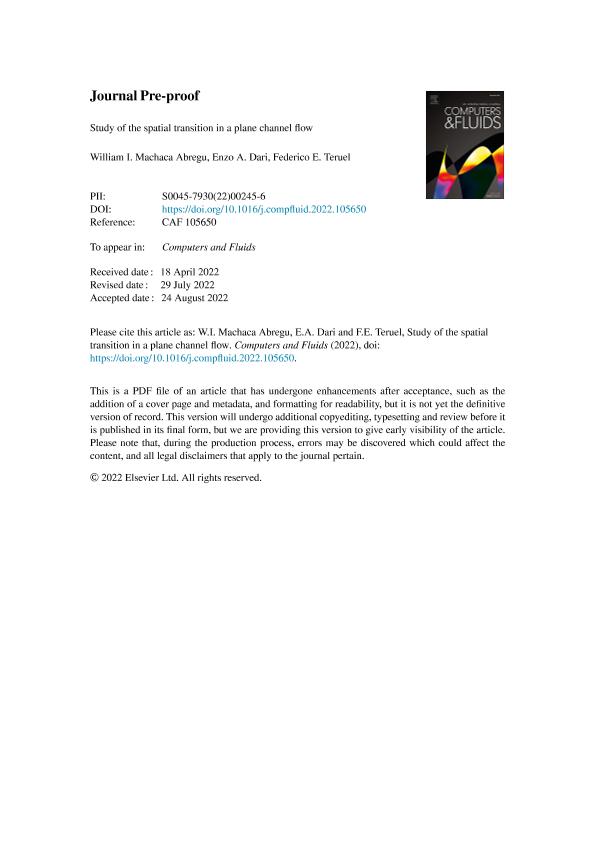Artículo
Study of the spatial transition in a plane channel flow
Fecha de publicación:
08/2022
Editorial:
Pergamon-Elsevier Science Ltd
Revista:
Computers & Fluids
ISSN:
0045-7930
Idioma:
Inglés
Tipo de recurso:
Artículo publicado
Clasificación temática:
Resumen
This study presents DNS results of the laminar–turbulent spatial transition in a plane channel flow. The transition is achieved imposing at the inlet the most unstable modes of the associated Orr–Sommerfeld and Squire eigenvalue problems. First, a study of the dependence of the transition on the intensity of the perturbations is presented. For Re=5000, eleven simulations employing different amplitudes of the Tollmien–Schlichting and oblique waves were analyzed to find that the variation of the friction Reynolds number and shape factor downstream the departure of the transition is roughly independent on the amplitude of the perturbations and that the location of the peak in the friction Reynolds number is strongly dependent on the amplitude of each wave. This implies that, for the type of perturbations simulated here, the transitional phenomenon is essentially delayed or accelerated by the amplitude of the perturbations. Second, two cases with well different amplitude of perturbations are compared in detail. Results show that in both cases the following stages can be identified: quasi-linear stage, late stage, spike stage, peak transitional zone, post-transitional zone and fully turbulent zone. Moreover, downstream the first state of the spike stage, both cases are essentially equal despite the fact that both transitions are separated by 50 channel half-height diameters in the streamwise coordinate. Finally, the physical phenomenon of the peak zone in the friction Reynolds number is explained considering the coherent vortices packet found across the height of the channel in the super-late stage of the transition.
Archivos asociados
Licencia
Identificadores
Colecciones
Articulos(CCT - PATAGONIA NORTE)
Articulos de CTRO.CIENTIFICO TECNOL.CONICET - PATAGONIA NORTE
Articulos de CTRO.CIENTIFICO TECNOL.CONICET - PATAGONIA NORTE
Citación
Machaca Abregu, William Ismael; Dari, Enzo Alberto; Teruel, Federico Eduardo; Study of the spatial transition in a plane channel flow; Pergamon-Elsevier Science Ltd; Computers & Fluids; 247; 8-2022; 1-56
Compartir
Altmétricas




